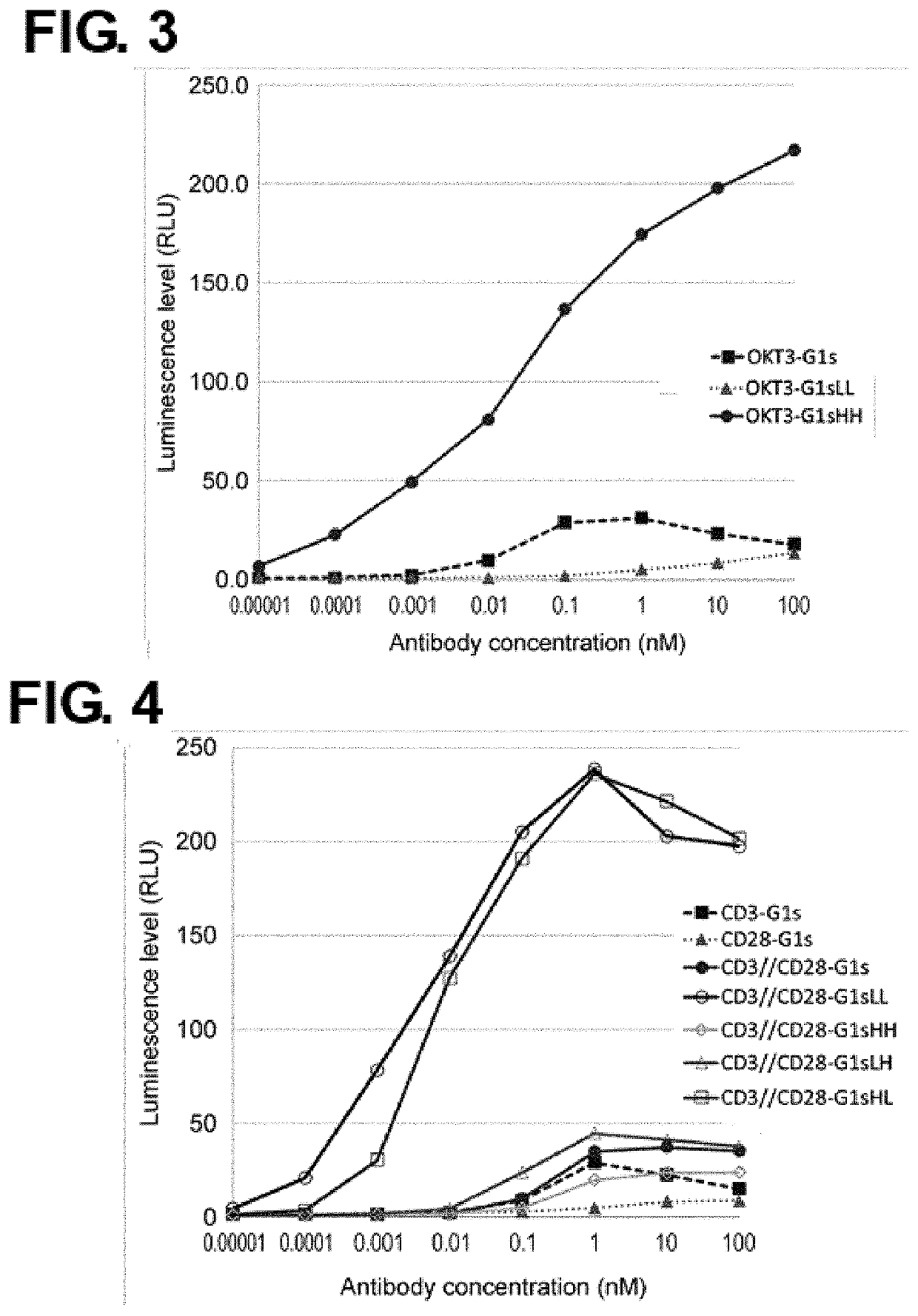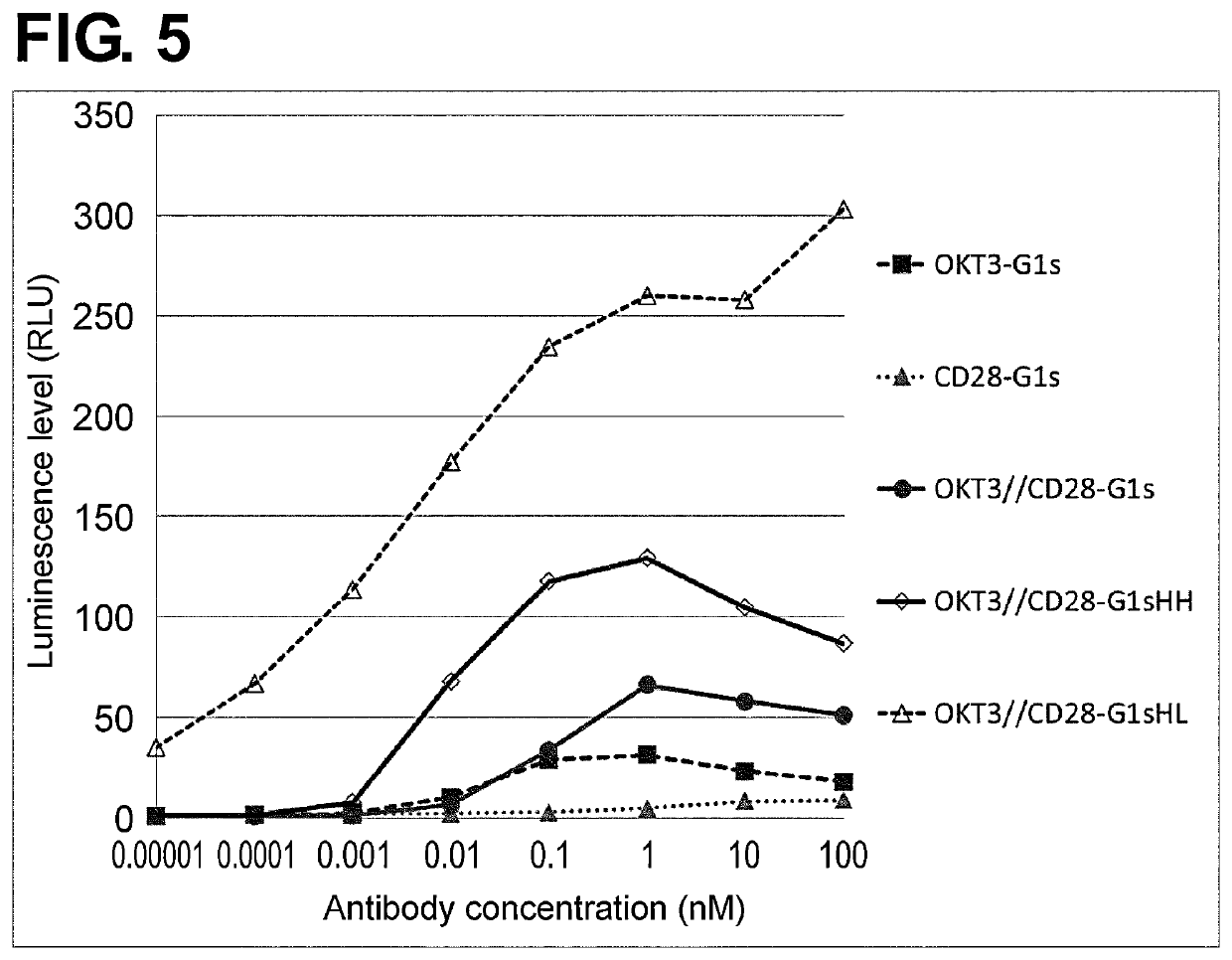Antigen-binding molecule containing two antigen-binding domains that are linked to each other
a technology of antigen binding and antigen-binding molecules, which is applied in the field of antigen-binding molecules containing, can solve the problems of antibody with effector functions readily causing side effects, antibody agonist antibodies may be difficult to obtain depending on the target, and sometimes do not exert the expected effect in their original native igg form
- Summary
- Abstract
- Description
- Claims
- Application Information
AI Technical Summary
Benefits of technology
Problems solved by technology
Method used
Image
Examples
example 1
Concept of Fab-Crosslinked Antibody
[0587]Agonist antibodies are superior in properties such as stability, pharmacokinetics, and production methods compared to natural ligands and their fusion proteins, and their pharmaceutical development is under way. However, in general, agonist antibodies with strong activity are more difficult to obtain than mere binding or neutralizing antibodies. A solution to this problem is therefore being wanted.
[0588]Properties needed for an agonist antibody may depend on the type of the ligand. For agonist antibodies against the TNF receptor superfamily, typified by Death receptor (DR), OX40, 4-1BB, CD40, and such, it has been reported that multimerization of antibody or ligand contributes to the activation. As techniques for increasing this effect, use of natural ligands, crosslinking by anti-Fc antibodies, crosslinking via FcγRs, multimerization of antibody binding domains, multimerization via antibody Fc, and such have been reported to enhance the agon...
example 2
Production of Expression Vectors for Modified Antibodies, and Expression and Purification of Modified Antibodies
[0591]An antibody gene inserted in an expression vector for animal cells was subjected to amino acid residue sequence substitution by a method known to the person skilled in the art using PCR, the In-Fusion Advantage PCR cloning kit (TAKARA), or such, to construct an expression vector for a modified antibody. The nucleotide sequence of the resulting expression vector was determined by a method known to the person skilled in the art. The produced expression vector was transiently introduced into FreeStyle293® or Expi293® cells (Invitrogen) and the cells were allowed to express the modified antibody into culture supernatant. The modified antibody was purified from the obtained culture supernatant by a method known to the person skilled in the art using rProtein A Sepharose® Fast Flow (GE Healthcare). Absorbance at 280 nm was measured using a spectrophotometer. An absorption ...
example 3 preparation
of Bispecific Antibodies
[0593]The purified antibody was dialyzed into TBS (WAKO) buffer and its concentration was adjusted to 1 mg / mL. As a 10× reaction buffer, 250 mM 2-MEA (SIGMA) was prepared. Two different homodimeric antibodies prepared in Example 2 were mixed in equal amount. To this mixture, a 1 / 10 volume of the 10× reaction buffer was added and mixed. The mixture was allowed to stand at 37° C. for 90 minutes. After the reaction, the mixture was dialyzed into TBS to obtain a solution of a bispecific antibody in which the above two different antibodies were heterodimerized. The antibody concentration was measured by the above-mentioned method, and the antibody was subjected to subsequent experiments.
PUM
| Property | Measurement | Unit |
|---|---|---|
| Electrical resistance | aaaaa | aaaaa |
Abstract
Description
Claims
Application Information
 Login to View More
Login to View More - R&D
- Intellectual Property
- Life Sciences
- Materials
- Tech Scout
- Unparalleled Data Quality
- Higher Quality Content
- 60% Fewer Hallucinations
Browse by: Latest US Patents, China's latest patents, Technical Efficacy Thesaurus, Application Domain, Technology Topic, Popular Technical Reports.
© 2025 PatSnap. All rights reserved.Legal|Privacy policy|Modern Slavery Act Transparency Statement|Sitemap|About US| Contact US: help@patsnap.com



